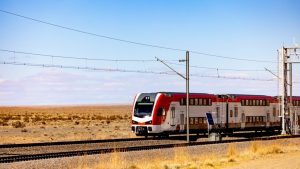 Caltrain electrification project is delayed, with services expected to begin in 2024, the rail operator providing transport services from San Francisco to San Jose announced.
Caltrain electrification project is delayed, with services expected to begin in 2024, the rail operator providing transport services from San Francisco to San Jose announced.
The delay, which is currently being reviewed by the Federal Transit Administration (FTA), is due to a range of factors, including complications in the installation of signalling systems, unforeseen conditions under Caltrain’s tracks, and the coronavirus pandemic, which severely disrupted supply chains necessary to the project.
“These delays are disappointing because the electrification of Caltrain is desperately needed. However, much has already been accomplished, and together with our contractors, funding partners and stakeholders, we will deliver the modern rail service that the Bay Area deserves,” Caltrain Executive Director Michelle Bouchard said.
To date, 75 per cent of foundations for the catenary poles are complete, while 60 per cent of the poles have been installed. All of the 10 traction power facilities are under construction while the overhead contact system has been installed in all of Caltrain’s four tunnels.
The first electric trainset has been completed and is currently being tested at the Transportation Technology Center in Pueblo, Colorado.
Based on the progress so far, and design and construction work remaining, the FTA prepared and provided a draft Risk Refresh Report to Caltrain, estimating that the electrification project will need an additional USD 333 million, increasing the project cost from USD 1.98 billion to USD 2.3 billion. Of the USD 333 million in forecasted costs, Caltrain has identified a funding plan for the known and allocated costs of USD 161 million. The remaining USD 172 million is in unallocated costs that has been set aside as a reserve for unknown risks. The agency will be developing a funding plan over the next several months in coordination with the project funding partners.
The Caltrain electrification is a key component of Caltrain modernisation programme and covers the electrification of the corridor from San Francisco’s 4th and King Caltrain station to the Tamien Caltrain station. Electrification improvements include converting diesel – hauled trains to electric trains, increase service to six trains per peak hour per direction, and maintain operating speed up to 79 mph (127 km/h).
Caltrain has signed a contract with Stadler for the procurement of 19 seven-car electric trainsets to replace the current diesel trains.
Share on:



